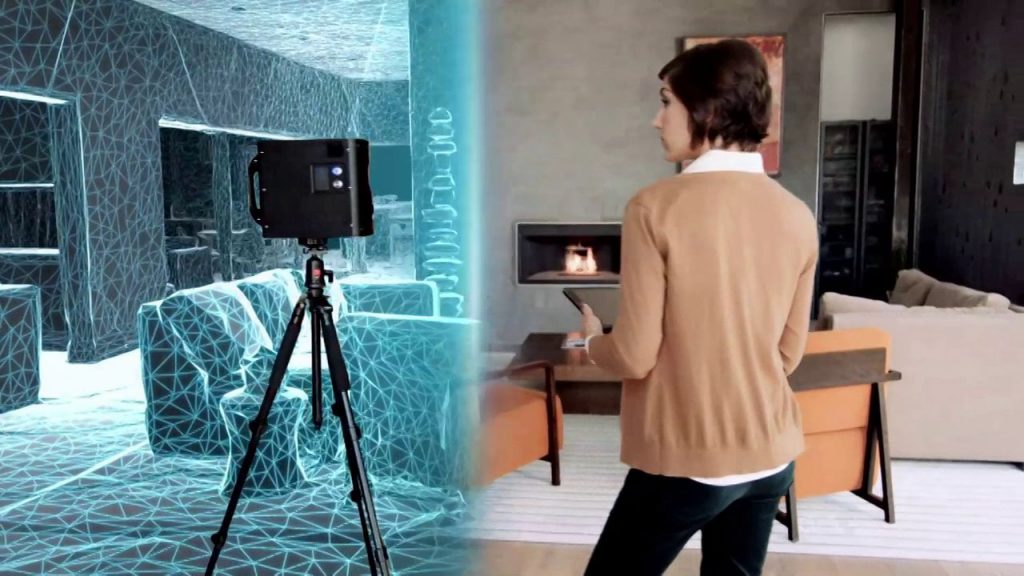Matterport has announced that it has secured $5 million towards developing its 3D-capture technology. The California-based company are market leaders in technology that facilitates the building of digital representations of 3D spaces. Their technology has been particularly applicable to the world of property, where potential investors can see a dimensionally accurate model of a building’s interior, mimicking the vision and depth perception of the human eye as accurately as possible.
The buzzwords behind it: 3D-capture, VR and AI
The significant cash injection from Ericsson Ventures is to go towards developing number of 3D projects under the Matterport umbrella.
The most prominent of these is 3D-capture technology. The latest camera for capturing 3D environments is the Pro2, released in May.
Based upon structured light 3D scanning, camera scans the environment before automatically suggesting the best locations for the camera via an app. It then generates 3D images by detecting depth through processing the size of infra red dots that it projects on to surfaces with an infra-red camera, before capturing the image with a RGB camera.
Once enough 360-degree photos are taken and light sources are manually indicated, the images are stored on the Matterport point-cloud and a 3D model is rendered from them in one to two hours. A simpler version of the tool takes the form of Matterport Scenes, a smartphone app that allows 2D and 3D capture of everyday objects.

The second frontier of Matterport’s 3D conquest is Virtual Reality and Augmented Reality. With Oculus VR headset compatibility, an application enables the user to immerse themselves in a 3D captured model of the space. In Matterport’s own words, it attempts to recreate the “cognitive sense of physically being in a place”.
The role of Artificial Intelligence in Matterport’s technologies is less visible, but it is just as important. The company uses deep learning technology, a form of Artificial Intelligence, where massive amounts of data are obtained from 3D scans of spaces and fed through an Artificial Neural network, so that eventually the 3D capture technology learns to recognise 3D space automatically and can represent it accurately. This is all without the need for a constant input of manual data-sets which would otherwise be required to improve the accuracy of the 3D rendering.
The implications for 3D capture and 3D printing
Matterport has previously used its technology for noble causes and its products have been applied beyond the commercial property sector. Scans such as that of Ai Weiwei’s exhibit on Alcatraz Island show the use of 3D capture in arts and conservation, while the Scan the World project now has over 8,000 3D printable scanned sculptures.
Unlike applications such as Google Streetview, Matterport’s 3D projections do not merely produce a flat 360 degree image with extensive distortion and no depth perception .
As far as 3D printing goes, it is not inconceivable that advances in 3D recognition through deep-learning may improve the the accuracy of models generated through photos alone, which would be useful for buildings and objects that are too large to fully scan.
For more news on commercial 3D technologies, subscribe to our newsletter.
Featured image: a fully rendered 3D interior captured by the Pro2 3D camera. Image via Pinterest.

